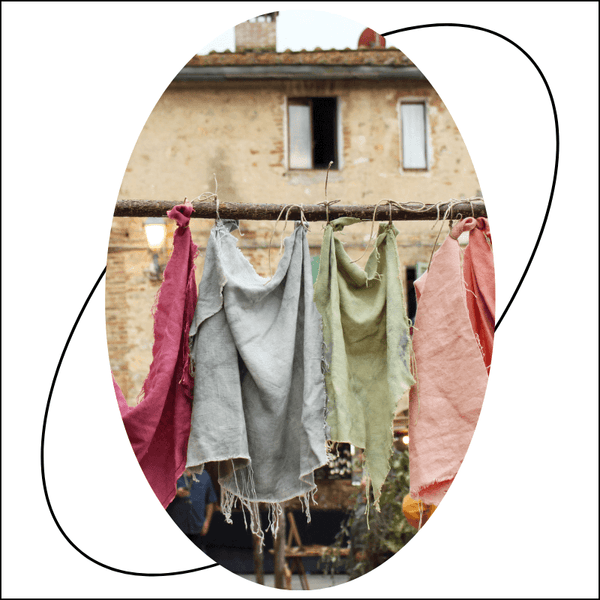Let’s talk about sustainable textiles this week, specifically natural sustainable fabrics. I have had this topic on my list of blog posts I need to write for a while now, so am really excited to dig in. BTW, next week I am going to talk about some really cool innovative textiles of the future. But, for now, let’s keep it au natural.
There are so many natural fibers out there that most people (even fashion industry people) don’t know about – well, I am here to change that. Get ready to learn about some really cool conscious textiles that come directly from the earth (no chemical processing required).
But, before we get started.
Have you heard about the totally FREE LIVE GROUP COACHING CALLS that are happening live, only on September 27 and September 28, 2022?
This is your chance to get all of your fashion startup questions answered by me – for free!
Plus, when you show up live you’ll get a copy of my Startup Tool Kit – with over 80 different startup resources that you need to know about as a fashion entrepreneur.
Because this is live, and I will be providing individual coaching, space is extremely limited. So, make sure to sign up asap while you still can.
How It Started vs How It’s Going
I was inspired to write this post because when I first started down this sustainable, ethical, conscious, slow, eco fashion journey (see what I did here, as time has gone on, there have been more and more marketing terms added to the roster) everyone wanted organic cotton fabric.
The Fall Of King Cotton
Then, cotton become known as a thirsty crop (a mostly untrue rumor started by unknowing bloggers and amplified by equally clueless media outlets – I have said it before and I’ll say it again – journalists, please stop promoting and listening to influencers, come get your info directly from us industry folks). Anyway, to date a lot of the “facts and figures” surrounding cotton, that look super official, are made up, so be careful where you get your info from.
The Rise Of “Ocean Plastic” Poly
Then, when cotton was out of vogue, and as brands tried to distance themselves from the fiber, recycled polyester became the new hot fiber.
This was going to be the fiber that solved all of fast fashion problems. But after about a year or 2 of the recycled nylon and poly craze, the story of pollution caused by microfibers shedding from these fabrics broke. And, brands and consumers once again questioned their choices.
Here is the funny thing. The microfiber news story was also fake news. In reality, not all synthetic fabrics shed microfibers, only a small amount of them do. So, that means they all of them don’t lead to ocean pollution. I think I am actually the first to be reporting this fact shared with me by the AATCC (American Association of Textile Colourists and Chemists) – so you heard it here first.
Is Hemp Fashions’ Savior?
And, that brings us to today. For the past year or two, hemp has definitely been having its moment. It’s easy to grow, doesn’t require pesticides because it literally grows like a weed, it’s strong and durable – and, most of you probably know all the hemp pros by now, so I won’t go on.
But, here. is the thing, there are sooooo many more amazing sustainable textiles out there that no one is talking about. If you need a refresher on plant-based fibers – check out this old blog post here.
The Challenge? Become A Sustainable Textile Influencer
So today, I want to challenge you to think beyond organic cotton, hemp, linen, and the other sustainable fabrics mainstream media is having a love affair with, and dig a little deeper.
Stop being influenced by the limited knowledge of the main media, and become a real sustainable fabric expert.
Let’s go!
Instead Of Animal Fibers (even those with the responsible wool standard stamp) Try Calotropis
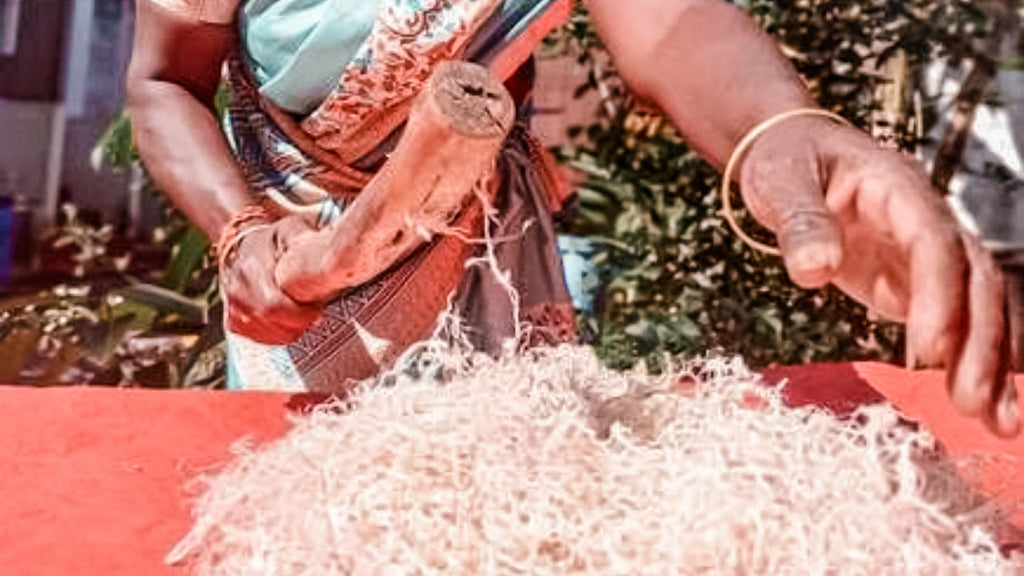
I first found out about the fiber calotropis and how it could be used as a wool substitute from the Indian company FABORG that creates vegan wool called WEGANOOL. I came across them while I was searching the internet for vegan wool options.
At the time everything that I was finding with the marketing “vegan wool” or “vegan cashmere” was really just synthetic soybean fibers. Essentially a more eco version on an acrylic fiber (made from petroleum). I wanted something more natural.
Luckily I found FABORG, with a home base in Auroville (in full disclosure, a village in India I have always wanted to visit).
Sometimes I Secretly Want To Learn More About Textiles Just So I Get To Travel
Auroville aka The City Of Dawn, if you don’t know, is very hippie-dippie. It’s a utopian society, that somehow has avoided the slippery slide into becoming a cult. “There is no money, no government, no religion, no skyscrapers or expressways, no newspapers with headlines of war, poverty, and genocide. Built for 50,000 people, Auroville today has only about 2,500 permanent residents and roughly 5,000 visitors—self-selected exiles from more than 100 countries.”
What Auroville is most famed for is its dedication to organic farming, zero waste living, and holistic health. I never got to go and visit, unfortunately. Somehow I always get sucked into doing more work in Jaipur or ending up in Goa.
Anyway, What Is Calotropis?
Calotropis is a plant native to India. Much like a dandelion that goes from a bright yellow flower (or weed depending on who you ask) to white and fluffy, the caletropis plant does the same. And, that white fluffy bit that was designed by nature to help seeds spread in the wind, is what helps to give yarns and fabrics made of calotropis their bulky (read good heat retention) characteristics.
Side Note – Could Dandelions Be A New Type Of Sustainable Fabric?
As I am typing this, it got me thinking – can we make sustainable textiles out of dandelion? Could it be possible to turn one of our countries most common home garden invaders into a sustainable textile? I am not sure, something tells me yes. If you are reading this, and are a textile engineer I challenge you to “steal” my idea, and run with it!
The Pros Of Calotropis
Anyway, let’s check out the pros of FABORG’s WEGANAOOL – and, there are a lot.
Collection of calotropis plants happens locally, close to the extraction unit (this means it has a low manufacturing carbon footprint).
Production of WEGANOOL™ helps the rural economy in dry parts of the country where jobs are difficult to come by (read, allows villagers to live at home with their families instead of needing to travel to big cities for work).
Calotropis thrives on barren lands. Multi-cropping Calotropis plant can convert dry, unusable terrain into profitable land for farmers ( doesn’t take away from farmland and food production).
There is no chemical usage in any process of manufacturing – extraction, spinning, dyeing, finishing, etc. (yazz).
The processing is done in a zero-waste system (again, yazzz).
WEGANOOL™ fiber extraction produces valuable multi-purpose residue: highly effective and affordable natural fertilizer & insect repellent for the local farmers that can replace various chemical fertilizers and pesticides (I love this, and how all parts of the plant are used).
So, What Does The Final Product Feel Like?
Well, it doesn’t exactly feel like wool, but it’s still a pretty cool fabric. FABORG calotropis fibers are actually mixed with 70% organic rain-fed cotton (remember how I told you earlier, not all cotton is thirsty). This is because the technology to process 100% calotrpis isn’t quite there yet.
The end result is a fabric that feels like conventional cotton but has a lofty and bulky feel like wool. In my opinion, it also has a nicer drape than cotton.
The fabric actually reminds me a lot of another type of sustainable textiles – kapok
Kapok – Another Vegan Wool Alternative
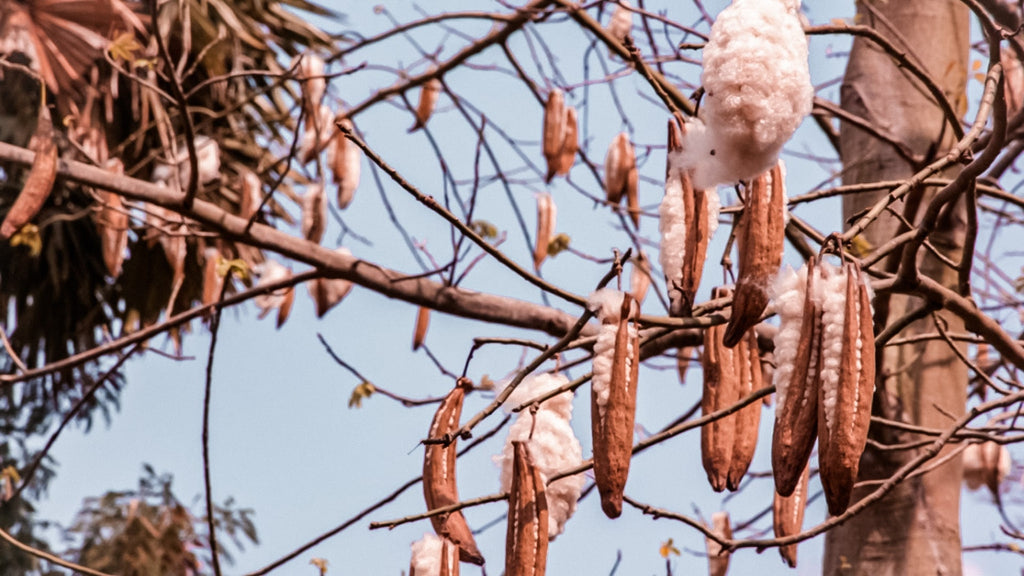
You can think of kapok as a cousin to the cotton plant. You know those airport t-shirts with the saying “everything is bigger in Texas”, well that’s kapok.
Kapok is a giant tree (it can reach up to 50 meters, that’s 164 feet, and can grow as quickly as 4 meters or 13 feet per year). And, just like calotropis this plant is native to India.
Again, like cotton and calotropis, the seed pods are the valuable part of the plant for making yarns and fabrics.
The downside to kapok is that it only blooms once every 5-10 years. But, when it does, a single tree can produce up to 4,000 seeds that are up to 6 inches long.
That’s a lot!
And, another benefit is that kapok trees grow naturally and don’t need fertilizers and pesticides.
So, The Big Question – What Does The Sustainable Fabric Feel Like?
Just like calotropis, kapok can not be spun into pure yarns – a blend with another fiber is necessary for manufacturing.
The end result isn’t really something that feels like certified organic wool – it actually feels a lot more like cotton, but a warmer version of cotton. Perfect for a cool summer night, or when you want something a little heavier during the change of seasons.
On the downside, kapok does not have the same fluffiness that calotropis has. For me, kapok is more of an eco-friendly cotton or recycled cotton alternative that creates a heavier product (like, remember those heavy cotton vintage t’s from the early 90’s that they just don’t seem to make like that anymore? – like that).
And, Fashion United estimates that by substituting 1kg of 100% cotton with only 30% kapok, it is possible to save about 3,000 liters of water. That is 15 bathtubs full of water, talk about environmental impact!
Instead Of Hemp, Why Not Try Abaca?
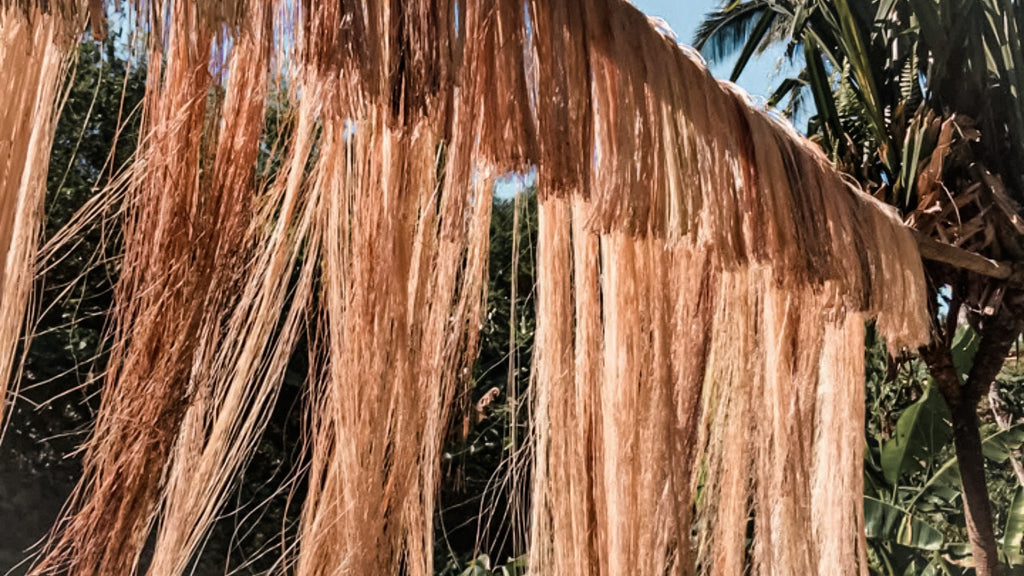
Abaca is a type of plant in the banana tree family, but it does not actually produce any fruit. In the Philippines, abaca is also knowns as Manilla hemp.
Manila hemp is nothing new, it’s been around for a while, and has traditionally been used in ship rigging ropes, other types of twines, and also in paper products.
What’s New, Is The Fiber In Accessories + Apparel.
Have you heard of Bananatex? Don’t confuse this textile with Pinatex (a leather alternative that ended up being much less eco-friendly than originally claimed).
If you are curious about the manufacturing process behind Bananatex you can check out this cute video here.
Bananatex recently partnered with H&M and Good News to create a line of sustainable sneakers.
Now, say what you will about H&M (“they will never be sustainable because they produce too much, and that is inherently unsustainable”), they do play a key role in the evolution and commercial viability of new sustainable textile offerings. By H&M giving that huge order to Banantatex it will allow them to streamline their technology and make it more easily available to startups (read, they can now be able to start offering lower MOQs).
Instead Of Linen Try Nettle
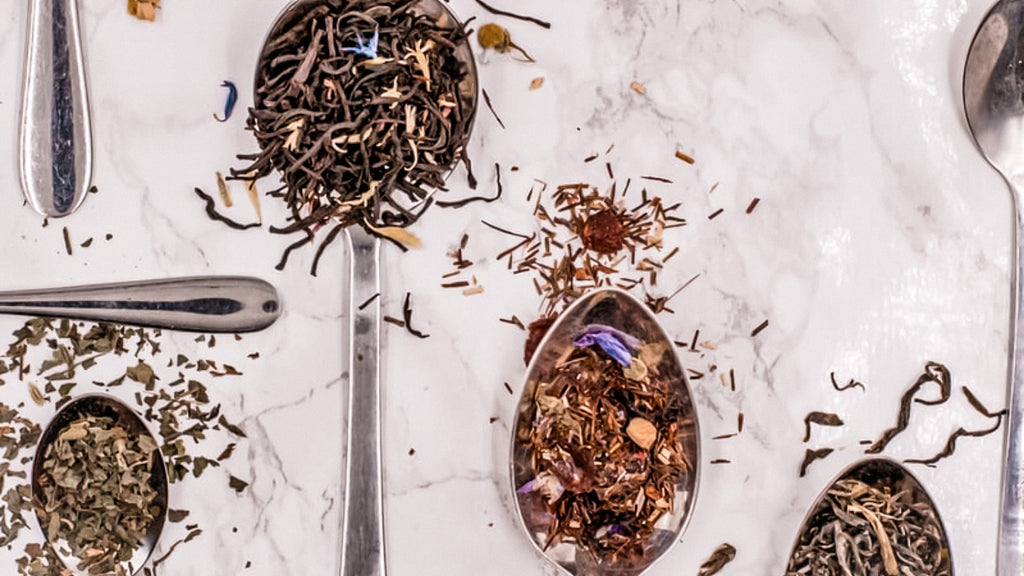
Nettle aka stinging nettle has leaves that will sing you. Nettles are a type of plant that has sharp needle-like hairs on its leaves. When you touch them, the hairs inject irritants into the skin, making it itchy, red, and swollen.
But, after picking and drying – they are no longer able to inject their toxins and are totally safe to wear.
For those of you in the wellness space (I am guessing quite a few of you) you might have heard of nettle tea. Nettle teas are said to help with urinary tract health, reduce inflammation and also help maintain and stabilize blood sugar levels.
Nettle is actually a type of bast fiber. A quick refresher in case you forgot, bast fibers are fibers from the stalk of a plant (cotton, calotropis, and kapok come from the seed) . Other common bast fibers include linen, flax, jute, and ramie.
Nettle In Sustainable Fashion
And, while recently nettle garments are gaining some traction in the media, they have actually been around for quite a while.
“In 2004, Florence-based fashion house Corpo Nove introduced jeans with nettle yarn that were a huge hit at Selfridges. Netl, a Dutch fashion label, collaborated with sustainable fashion designer Rianne de Witte for a first collection that featured clothes in vibrant colors and geometric shapes that were a blend of 75 percent cotton and 25 nettle yarns.”
Instead Of Peace Silk Try Lotus Silk
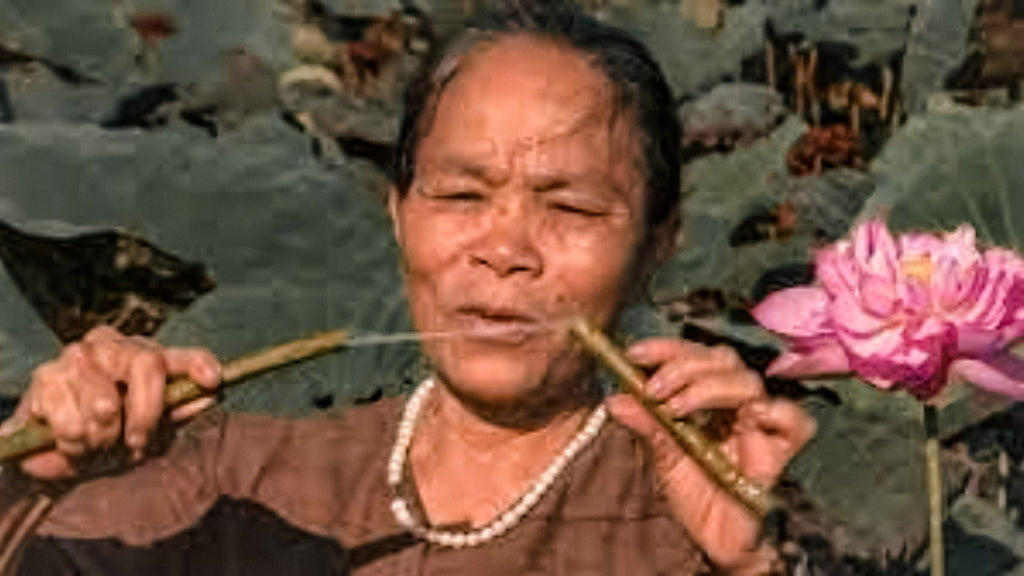
If you are looking for a sustainable vegan alternative to silk, usually the first few fibers that will pop up in your search are cupro and modal.
But, both of those are types of rayons are made by breaking down cellulosic plants into a pulp, mixing the pulp with chemicals, and then extruding a synthetic, or depending on who you talk to, semi-synthetic fiber.
If you want something less processed and more natural, you might want to consider lotus silk, which is actually one of the rarest fabrics in the world.
Beware Of Sustainable Fabric Fakers
Unfortunately, fake lotus silk is a huge scam right now, especially in India. It feels like all of the conscious fashion communities I am in have been hit with a stream of Indian scammers trying to sell regular old viscose as lotus silk.
And you know what? Most brands and customers don’t know the difference.
That is because real lotus silk is extremely time-consuming, and difficult to make, meaning it has a super high price tag that many brands simply can not afford.
If you want to learn more about how real lotus silk production and educating yourself (or, how to avoid scams) check out this really cool video from Business Insider.
Want An Even More Exclusive Sustainable Textile? How About Sea Silk?
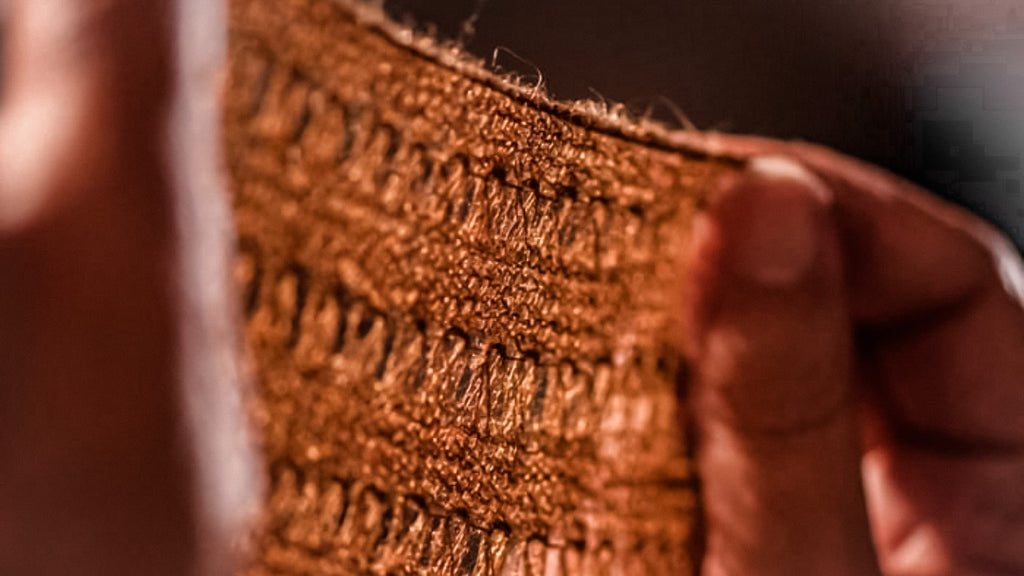
The fiber is the solidified saliva of a large clam, known in Latin as Pinna Nobilis. And, although I have never gotten to see it in person, rumors say it is one of the lightest weight and luxurious fabrics in the history of the world.
According to the BBC – there is only 1 woman in the world left that makes sea silk.
Should We Revive This Dying Art?
Side note – if anyone in an NGO or charity is out there, I feel like we need to save this dying art!
But, beware – there might be a reason why no one is doing this anymore according to the BBC article –
“Up until the Mussolini era there were still a number of women in Italy who were skilled with byssus, says Evangelina Campi, a professor of Italian history and author of La Seta del Mare (The Silk of the Sea).
Some even tried to set up a business and make money from it.
“The factory ran out of business in three months,” Campi says. “This is a thing you cannot profit on. Strangely, something bad has happened to people who wanted to manufacture byssus on a large scale in the past. It’s like God sending a message.””
Yikes!
Full disclosure I think this is the coolest sustainable textile probably ever – and, I want some so bad! Did you know those byssus fibers are so ancient they are mentioned on the Rosetta stone and said to have been found in the tombs of pharaohs?
Gimme!
Like I Said, Will Travel For Textiles
Literally, as I am writing this post I am like I need to get to Italy and check this stuff out in person before it’s too late. If you know me then you probably know that on every vacation I go on, I drag my family to some sort of sustainable textile thing. In Mallorca, I visited a third-generation ikat mill deep in the mountains and a full day of driving out of our way.
And, in Ireland, I took us on an off-road adventure to check out an operating wool mill (which are becoming almost impossible to find as Ireland’s wool manufacturing industry disappears to countries like Australia and China).
Anyway, I really want to see this sea silk in person, if anyone has, please reach out and let me know your thougths!
What Do You Think?
BTW, it’s cool if you still want to use cotton with the Global Organic Textile Standard or hemp for your conscious line. The goal of this article, like a lot of what I do, is simply to just get you thinking differently, and, to maybe learn about something new and cool.
Are there more natural sustainable textiles that I might have forgotten? Let me know in the comments!
Let’s chat about them!
